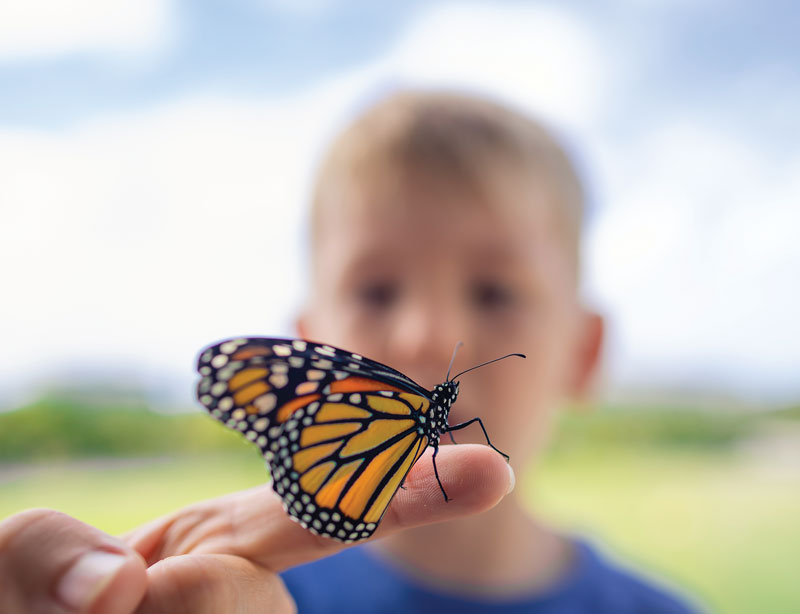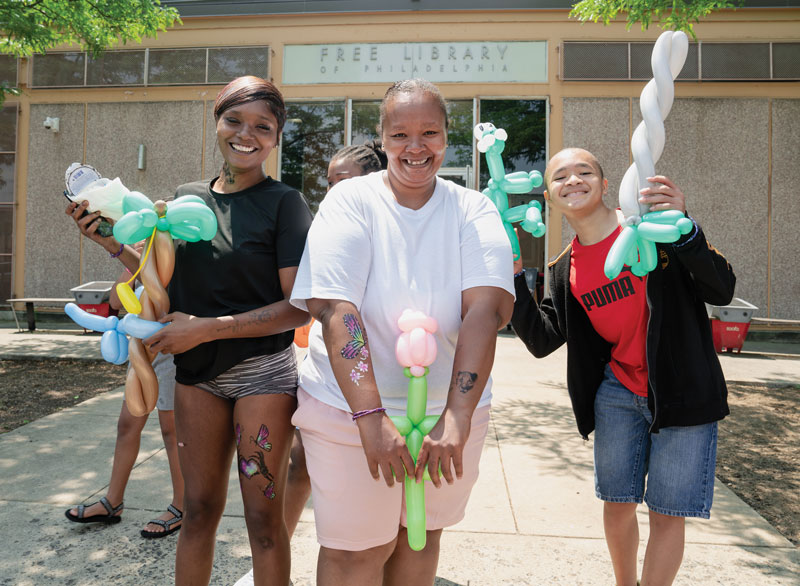Fostering Wonder: Librarians Can Help Sustain This Vital Aspect of Learning
When it comes to young learners, wonder is a key tool. It helps children become self-motivated learners, excited to explore where their knowledge will take them.

Did you know that it’s all right to wonder?
There are all kinds of wonderful things!
Did you know? Did you know?
Did you know when you wonder you’re learning?
When Fred Rogers first sang these simple lyrics on his children’s TV show, Mister Rogers’ Neighborhood, in 1979, he was using science-of-learning ideas ahead of his time. Rogers passed away in 2003, and in the years since, a flurry of research has focused on the concepts he presented to young learners over the course of nearly 900 episodes .
In Wonder: Childhood and the Lifelong Love of Science (MIT Press, 2022), developmental psychologist Frank C. Keil defines wonder as “a joyous, even euphoric activity,” “a drive that comes from within,” and something children grasp more easily than adults.
 |
photo by kieferpix/Getty Images |
“We are all born with many essential ingredients of wonder—with inquisitive minds, fascinated by the world around us,” Keil writes.
When it comes to young learners, wonder—as Keil and other researchers across the fields of psychology, education, neuroscience, and philosophy have shown—is more than a pleasant feeling. It can help children become self-motivated learners, excited about finding answers to their questions and exploring where their new knowledge will take them.
While wondering is a modus operandi for young children, wonder itself is fragile. The forces that threaten it include the usual suspects: fear and bias, polarized communities, lack of funding, technology, and school years that feel programmed around end-of-year tests.
When kids are old enough to enter school, wonder takes a nosedive. The number of “Why?” and “How?” questions plummets, Keil writes, and children’s “spontaneous love of science” begins to fade.
This loss of wonder, Keil contends, is a problem for society at large because it can lead to disengagement, disillusionment, and even “a void in which mere consensus, motivated reasoning, and cognitive biases take over.”
The good news is that it doesn’t take a legion of adults to help children preserve their wonder. As ecologist Rachel Carson famously wrote, “If a child is to keep alive his inborn sense of wonder…he needs the companionship of at least one adult who can share it, rediscovering with him the joy, excitement, and mystery of the world we live in.”
Children’s librarians are uniquely positioned to be that “one adult,” that protector of wonder.
“The library and wonder really go together in my mind,” says Christine Caputo, youth services administrator at the Free Library of Philadelphia (FLP). “Because it is that sort of experiential place where almost anything can happen.”
[Also read: Matthew Cordell on the Radical Kindness of Fred Rogers and Mister Rogers’ Neighborhood]
Benefits of Wonder
|
Promoting wonder
Libraries can foster wonder even when patrons aren’t in the building. Programs that take place online, at home, or—as is the case with the FLP’s “Summer of Wonder” program—on a closed city street or at summer camp, can inspire young patrons to seek answers to their many questions and engage with ideas and the natural world.
Encouraging wonder can be as easy as tweaking how you ask children questions and as hard as admitting you’ve messed up. It requires patience and persistence. As you help kids develop their ability to look at the world through a wonder paradigm, you’ll also be building your own capacity for wonder.
Developing a wonder mindset require self-monitoring, curiosity, and imagination. Building it into your library will
impact how librarians design programs, set up learning spaces (plan on a big whiteboard for all those questions!), and more.
Librarians can launch their wonder practice by thinking of ways they can replicate programs that other libraries have used successfully, and by following the best practices below.
Encourage questions. Many times, one of the messages children receive when they enter school is, “Adults ask the questions; students answer them.” Keil encourages adults to pay attention to the way they ask questions—open-ended ones that invite elaboration are best—and suggests that they try tracking the number of questions students ask spontaneously.
Say “I don’t know.” Doing this, adults show that it’s OK to need to learn more. “Wonder is very unusual,” Keil said in a 2022 interview. “It’s this act of great intellectual humility, because you’re admitting you don’t know something, but also audacious and daring because you’re challenging the status quo.”
Following up “I don’t know” with “I wonder why?” librarians let children know they are partners in the wonder process.
Plan unstructured time. When learning activities feel heavy-handed or as if the adult in charge already knows the answers to all the kids’ questions, children may lose interest. But when learning supports are subtle and adults are comfortable guiding instead of leading, all parties, Keil says, “connect...in a spirit of shared discovery and knowledge creation.”
It might seem oxymoronic to advise librarians to structure unstructured time for wonder, but programs like the McCracken County (KY) Public Library’s “Wonder Time” show how it’s possible. In 2015, the library won a “Curiosity Creates” grant from the Association for Library Service to Children (ALSC). “Each month, children had the opportunity to ‘wonder’ about something, from yoga and mindful breathing to exploring items from the mineral museum,” writes Paula Holmes, former ALSC fiscal officer and grant evaluator in “Curiosity Creates: Innovative Library Programming for Children.” Young patrons choose the subjects to research, and the program takes place on the library floor—a visible spot that encourages anyone just passing by to join. Like all library events, “Wonder Time” has a set time and place, but its “anything goes” content philosophy within those parameters makes it work.
Slow down. Wondering is exciting. Most of us caught up in it will want to rush ever onward toward more information and knowledge. However, wonder requires patience and pacing. Children need time to let ideas sink in, and they often need support to help them plan next steps to further their understanding so “they do not become overly confused or frustrated before experiencing the sense of ‘closure’ that comes with knowledge acquisition,” writes Megan Powell Cuzzolino, an education researcher with the Harvard Graduate School of Education, in her paper “Leveraging Epistemic Emotions to Cultivate Intrinsic Motivation.”
 |
Participants in the Free Library of Philadelphia “Summer of Wonder” programCourtesy of the Free Library of Philadelphia |
Safeguarding wonder
In When You Wonder, You’re Learning: Mister Rogers’ Enduring Lessons for Raising Creative, Curious, Caring Kids, Gregg Behr and Ryan Rydzewski write that wonder and its cousin, curiosity, aren’t just “nice to have” for kids. Rather, they’re necessary emotions for later career success.
“The future will require today’s young people to forge careers that cross sectors and industries, requiring constant learning,” they write. “Those without the ability or desire to keep up could find themselves automated out of a job or otherwise left behind. Meanwhile, the curious will be rewarded.”
Children who sustain their sense of wonder can become adults who approach everyday problems with a scientific mindset. Wonderers aren’t undone by the unknown or threatened by new knowledge that requires them to change their minds. Because wonderers are lifelong learners, they can keep moving forward in an ever-changing world. And finally, by seeing the world as a place with countless wonders waiting to be discovered, they lead dynamic and interesting lives where even day-to-day activities have a sparkle to them.
Librarians have had a tough couple of years: book bans, divided communities, funding uncertainty—the list could go on and on. Indeed, if librarians cultivate their own feelings of wonder in addition to helping children cultivate theirs, they might be surprised by how it enriches and changes their lives.
As challenging and dark as life can get, wonder is bright and life-affirming. When asked what wonder meant to him, Daris McInnis, a summer learning curriculum specialist with FLP, said, “It means it is all about hope. It’s all about hope.”
Journalist Chelsey Philpot is the author of two YA novels,Even in Paradise and Be Good Be Real Be Crazy.
RELATED
The job outlook in 2030: Librarians will be in demand
The job outlook in 2030: Librarians will be in demand
ALREADY A SUBSCRIBER? LOG IN
We are currently offering this content for free. Sign up now to activate your personal profile, where you can save articles for future viewing







Add Comment :-
Be the first reader to comment.
Comment Policy:
Comment should not be empty !!!